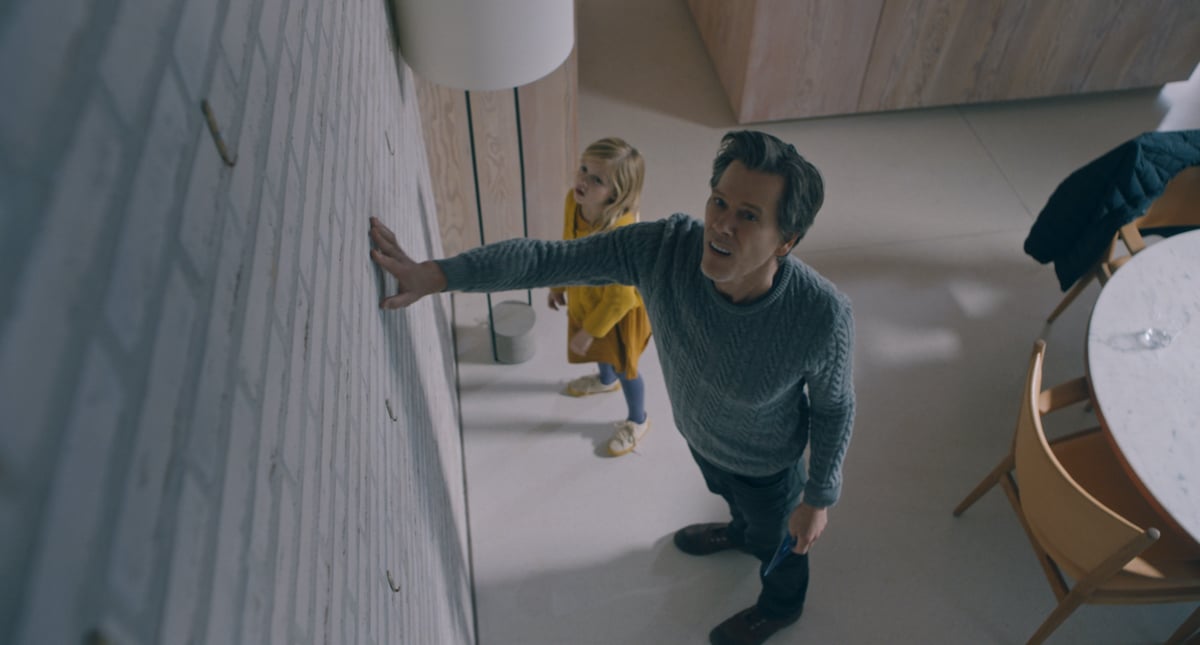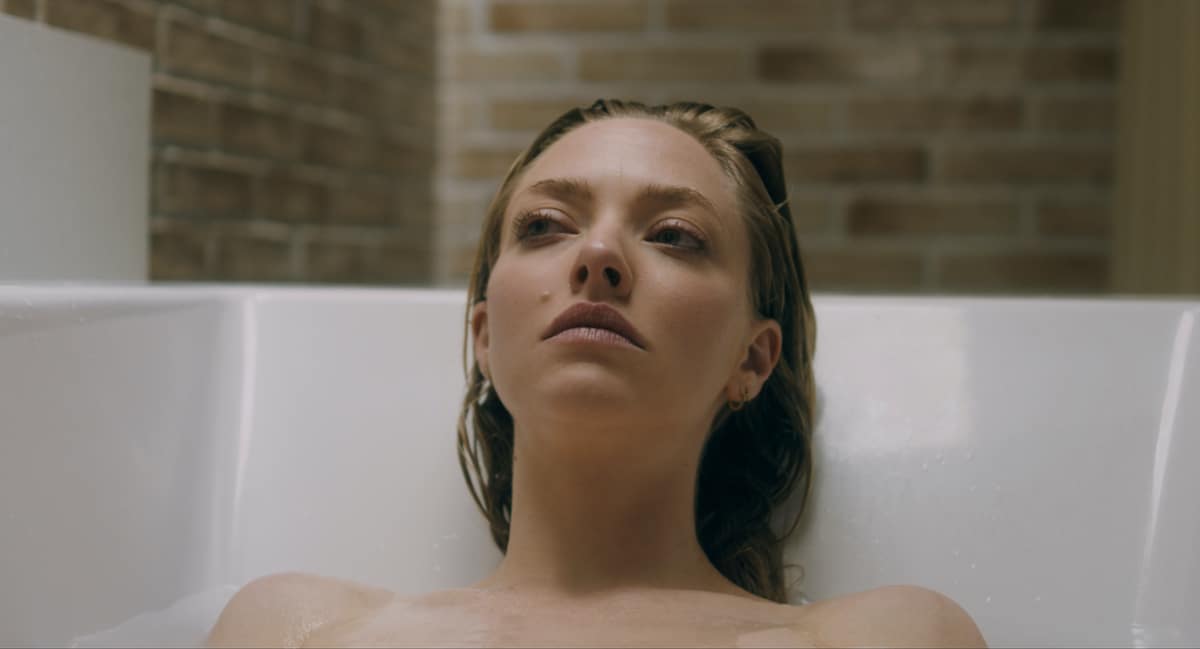DoP Angus Hudson shoots psychological horror film “You should have gone” for David Koepp
, February 2, 2021
US director David Koepp filmed an atmospheric novella by German author Daniel Kehlmann about a failed marriage and an eerie house with British Angus Hudson in front of the camera in the Welsh loneliness. We spoke to DoP Hudson for our issue 11.2020 about how he staged a modern haunted house, how creatively the architecture was used and why even the second floor was fictional. As a bonus there is a short interview with director David Koepp tomorrow!
Daniel Kehlmann already has plenty of experience with his novels being turned into films. But the call from Hollywood was extraordinary. Script legend David Koepp wanted to adapt the 96-page novel “You should have gone” as a psychological horror. Koepp has an impressive filmography, as he previously wrote scripts for “Jurassic Park”, “Panic Room” or “War of the Worlds”. Horror materials can also be found in his work, such as “The Secret Window” with Johny Depp or “Echoes – Voices from the Intermediate World” with Kevin Bacon.
Koepp had long wanted to do a psychodrama with Bacon. Bacon read Kehlmann’s novel and Koepp opted for the novella through Universal Pictures. At the time of preproduction, David Koepp lived with his family in London. So it was that producer Jason Blum from the horror company Blumhouse decided that it would be shot in Europe.

Vacation job 1981
So DoP Angus Hudson joined the project. Hudson had his cinematic awakening moment in London’s Leicester Square, where he saw “Apocaplypse Now” on the big screen at the age of 15. The Briton had little interest in the school. “In the years that followed, I successfully managed to fail all of my exams – spectacularly,” says Hudson. His mother was working in advertising at the time and got him a summer job as a runner at Studio Lambert, one of the largest British advertising studios of the 1980s. At the end of the summer vacation, he begged his mother to be allowed to stay there. “You could say I am still working in my vacation job from 1981.” Hudson learned the basics of cameras at Studio Lambert, did internships in rentals and in 1989 he met Roger Deakins as a camera operator in an action unit for “Air America” DoP who gave him valuable tips for exposure. “Roger was very kind and generous,” says Hudson. That encouraged the young focus assistant to ask Deakins to be his advocate for admission to the National Film School. Deakins agreed, but in vain. “Even with Roger Deakins as my sponsor, the National Film School turned me down,” says Angus Hudson. Today he can laugh about it. “I am currently lecturing there again and again. I have to tell them that! “
Hudson’s first work as a DoP was the Indian comedy “Hari Om”. Between the DoP works, work as a DoP of Second Units or B-Camera on major projects such as “Edge of Tomorrow”, “Assassin’s Creed” or “Star Wars – The Last Jedi” followed again and again. Hudson called on David Koepp in May 2018, who quickly decided on the British. Both hit it off right away. Pre-production started in September 2018. David Koepp was still working on upcoming Steven Spielberg projects and had a lot to do. This gave Angus Hudson great freedom, together with production designer Sophie Becher, to develop a concrete visuality for moods, colors and motifs. The two had already worked together and ticked similarly when it came to their vision. Becher brought the main motif, the so-called “Life House”, into play. The ultra-modern vacation home was designed by star architect John Pawson and is located in Llanbister in the Welsh province of Radnorshire. The interior is characterized by light, warm minimalism, which the production designer and cameraman found fascinating and which inspired almost all of their decisions.
–
Inspirational architecture
Filming began in October 2018. The film was shot in Wales and the interior was shot in the London studio. The complete, expanded floor plan of the house was created there. Expanded because Koepp invented a second floor in order to be able to increase the options of spatial confusion even more. “David fell in love with the idea of adding the grand staircase in the foyer to the finale,” says Angus Hudson. “Visually a very good idea!” That also meant that Sophie Becher had to put herself in the shoes of the architect John Pawson when the second floor was completely redesigned.

It was a challenge to visually merge the real motif with the recreated interior in the studio and the completely reinvented second floor. Some scenes were also shot in the original motif, for example when looking out of one of the large windows into the garden. There are scenes in which Kevin Bacon comes through the real door into the real motif, cuts through the wrong foyer, turns into a real corridor at the original motif and steps into a room in the studio made from reused walls.
“It was very well planned, but we never really knew what it would look like in the cut,” says Angus Hudson. In other words, the team shot the necessary material for each motif, but Hudson himself was surprised in the finished film by the shots that were put together. However, that was also the idea for the second half of the film, in which the protagonist increasingly loses orientation in the house – and on the different narrative levels. “So that supported the story perfectly.”
Angus Hudson shot on an ARRI ALEXA Mini and prepared a LUT for the filming together with the colorist Rob Pizzey from GoldCrest, which he then took to the set. Hudson used Panavision P vintage lenses at ALEXA. “I like an image that feels softer, not too crisp,” says Hudson. The DoP shot a few lens tests without LUT with different lenses, including the Canon K35, and also added filters to emphasize the clear, bright colors inside. “I also considered anamorphic, but wanted the movie to be purer and cleaner, not epic,” says Hudson. “In addition, I definitely didn’t want to endanger the linearity of the architecture.”
–

P-Vintage Lens
Hudson recorded in ARRIRAW at 2.8K. He also used a soft light for the lighting, as the large window areas on the original motif in the gray Welsh autumn weather created very soft available light anyway. So for the entire film, Hudson chose an approach that worked through very soft light. Nevertheless, he wanted to bring in a bit of plasticity and contrast, since many of the rooms were almost white. “The P-Vintage are a very nicely matched set with glass from the 1970s, I used a Tiffen Pearlascent to make the highlights shine a little more, to make them softer.”
The P-Vintage lenses are made of rehousted ZEISS glass, which gave Hudson the softness he wanted with slightly better contrast performance with brightly lit windows and light walls. “To show the architecture, I worked more at a wider angle than I might otherwise do, using the 50s, 35s or 18s rather than condensing them closer,” says the cameraman. [13668]
Would you like to find out more? The complete article is available here!
Tomorrow you can read the bonus interview with screenwriter David Koepp here!
–
–
–
–
–
–
–
–
–
–
–
–
–
–
–
–
